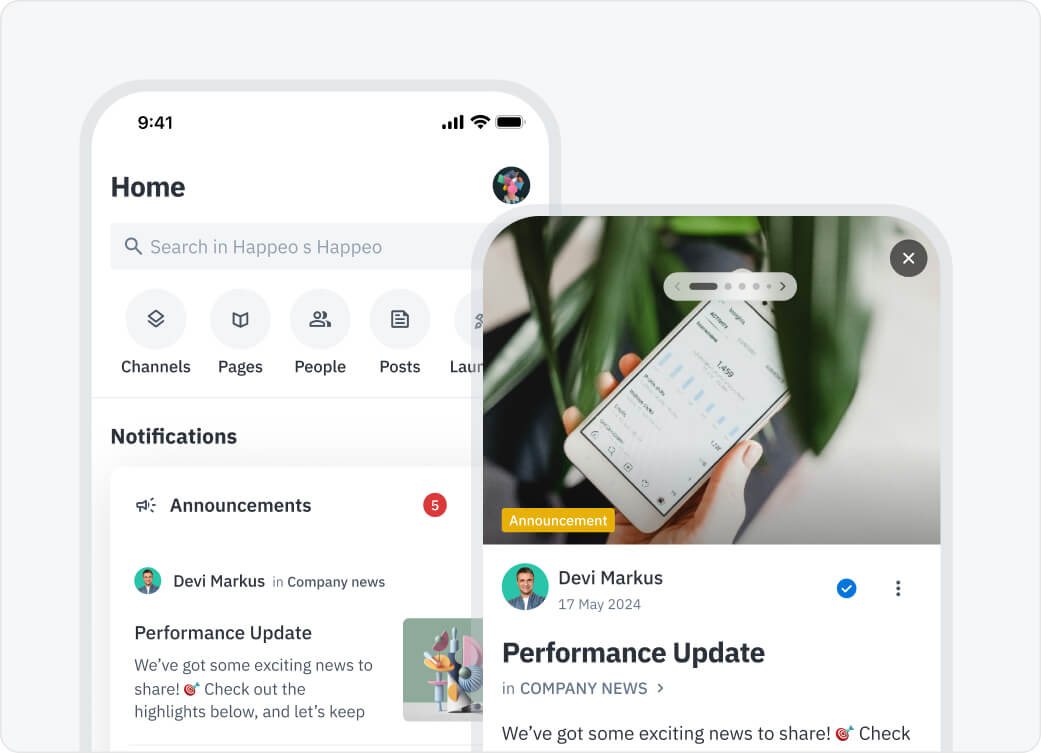Did you know that 42% of voluntary resignations could have been prevented? The key is communication. Yes, it's that simple. Tell the people who work next to you how important their work is and you’ll get motivated and engaged employees. It's another matter when dealing with many people working remotely and in the field, not in the office. In this case, it's more challenging. However, the focus should still be on interaction and communication.
So let's cut to the chase and figure out how to reduce remote and frontline worker turnover.
What is the employee turnover rate?
This term (calculated as a percentage) refers to the number of employees who have left the company over a given period of time.
A situation in which employees are leaving the company in large numbers can have unpleasant consequences:
- You lose valuable employees.
- The company's reputation suffers.
- Your team cohesion also suffers, as those who remain feel insecure, have doubts, and may feel that their work makes no sense.
To avoid such scenarios, you need 2 things:
- Find out why people quit.
- Find ways to stop it.
We'll talk about why people quit later. First, let's find out who the frontline and remote workers are in your organization.
Who are the frontline and remote workers?
Let's outline who frontline and remote workers are.
- Frontline workers are those who interact directly with customers and products. For example, retail workers, healthcare workers, or delivery drivers. Hence the name. It can be said that these employees simply cannot work any other way because being on the front lines is a prerequisite for the existence of their profession. Without frontline workers, a company can't effectively deliver services or goods to its customers. Frontline workers are the face of the company.
- Remote workers, on the other hand, are more flexible. They work away from headquarters, often from home (or a coffee shop). In the past, it was mostly customer support managers who worked remotely. But today, we see everyone from programmers to pastry chefs working remotely. Besides, 98% of those surveyed said they would like to work remotely at least some of the time. Meanwhile, remote workers provide companies with flexibility and uninterrupted work behind the scenes.
Why do your people quit?
The layoffs come after several months of analyzing the problems faced by frontline and remote workers, which are still unresolved:
- Isolation. With so much time away from the office, employees can lose touch with the team. Keeping employees engaged is what companies have to deal with.
- Lack of internal communication tools. If employees don't have the right tools or clear communication channels, they may miss important updates or feel left out. This is especially true for front-line employees, who need seamless access to company information.
- Lack of up-to-date industry-specific knowledge. To stay relevant and contribute to the growth of your organization, employees need to continue learning. Conversely, knowledge gaps can be detrimental to both your employees' careers and the success of your business. Filling knowledge gaps by providing on-the-job learning opportunities is the key to a healthy work culture and a successful business.
Let's highlight additional reasons for staff turnover:
- Low salary
- Interpersonal issues with colleagues
- Toxic work environment caused by lack of diversity and disrespect
- Employees feel they are not heard and their contributions are not valued
- Burnout and health issues
- Lack of unifying corporate culture, etc.
Does this sound relevant?
Our goal is to connect with frontline and remote workers in a way that helps build healthy communication within the team and thus reduces employee turnover.
The need to connect with the team is more important than you might think:
- Employees need a shared digital home where everyone is valued equally;
- Remote and frontline workers need to be publicly recognized for their results;
- Your employees should know that their contributions are part of a larger, shared success.
For all of these needs, there is a solution.
Ways to connect with frontline and remote workers
The solution seems obvious: a comprehensive, communication-focused culture.
You don't have to reinvent the wheel - you can start with the simplest thing: the first point of contact with employees during the hiring process. You can turn to proven types of recruiting software that provide tools for efficient hiring, transparent onboarding, and easy-to-use communication across the organization.
With such a versatile system, you can meet everyone's need for internal communication during the hiring process, access to company information, answers to work-related questions, and most importantly, instant communication with colleagues or management. All this contributes to increased productivity and team cohesion.
There is another comprehensive way to solve multiple communication problems at once. We’re talking about the intranet.
Use the intranet to connect remote and frontline workers
A well-designed intranet can give employees a sense of connection and purpose. How exactly?
- It is a source of truth. An intranet is a place where every employee, regardless of job title or experience, has fair access to company news. And most importantly, they see that the company cares about notifying all colleagues of changes. Everyone is in the same boat.
- A place to talk about you. The intranet usually contains news about colleagues' achievements. When you see your name among these lucky ones, it inspires you to work just as hard and stay with the company. No wonder, as you're valued and your achievements are publicly acknowledged.
- This is where employees have a voice. Even when employees are out of the office, they can have a say and be heard through communication, commenting, and voting tools. On the intranet, employees can share ideas, debate important issues, and stand out as thought leaders or innovators. Ultimately, this freedom of expression builds loyalty and reduces turnover.
- This is why your employees work faster. Mobile intranet applications are one of the latest intranet trends. But only if they are user-friendly and up-to-date because legacy systems should be a thing of the past. In addition to giving employees on-the-go access to work materials or team meetings, a mobile intranet application makes life easier in general. No more searching for a desktop computer to solve a pressing work problem. All you need is a smartphone, and that's something that field workers will definitely appreciate.
- Management and employees are on the same page. One of the reasons for employee turnover is the lack of direct contact between employees and management. It seems that decision-makers do their best to avoid contact with those who work in the organization. In this sense, the intranet is a game changer. Now management is closer to the people because they can answer employees' questions directly, and that encourages you to invest in a common cause where you are seen, right?
Want an engaged team with low turnover? Build people-first company
In this article, we've discussed how to manage employee turnover among frontline and remote workers by focusing on teamwork and communication. What plays an important role in connecting employees working in different locations is a common hub, software that should become a shared digital home for everyone. This is intranet software with all the benefits of teamwork it brings. We hope we've answered your most pressing questions about reducing employee turnover. Now it's up to you to choose the software to unite your employees into a cohesive team dedicated to achieving your business goals.


